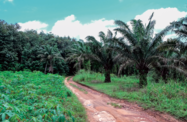A number of initiatives to improve irrigation and fertiliser supplies are under way in Kenya to boost productivity as the country looks to expand its primary agricultural output to ensure food security and support value-added industries.
The mainstay of Kenya's economy, agriculture accounts for about 25% of GDP directly and a further 25% indirectly, according to official data, employing around 60% of the country’s workforce across the formal and informal sectors.
One of the main goals under the government’s Vision 2030 campaign is to expand agriculture and irrigation. In its draft National Irrigation Policy 2015 document, the authorities estimate that properly utilised irrigation can increase agricultural production by up to 400%. Despite the fact that irrigation accounts for only 1.7% of agricultural land, irrigation contributes 3% to the country’s GDP and provides 18% of the total value of agricultural produce, according to the draft policy document, produced by the Ministry of Agriculture, Livestock and Fisheries.
An over-reliance on rain and lack of irrigation infrastructure have been the main factors limiting agricultural productivity in Kenya, making output susceptible to impacts from climate change and variable weather patterns. However, a new domestic fertiliser plant and advancements in technology regarding crops may also contribute to future growth in the sector.
Irrigation to expand
By the end of 2013, about 161,840 ha of irrigated land in the country had been developed, according to the policy report. However, the ministry estimates that the potential for irrigated land, based on current available water resources, is around 1.3m ha, meaning only about 12% of the country’s current irrigation potential has been realised.
The development of new irrigation has been slow until now due to outdated policy frameworks and legislation, as well as a lack of investment from both the private and public sectors.
These issues are being tackled by objectives laid out in the new policy, which includes expanding land under irrigation by an average of 40,000 ha per year, and a government financial allocation for irrigation of at least 5% of the annual national budget. The budgetary provision to the irrigation sub-sector in 2013/14 was KSh9.6bn ($101.2m), falling well below the KSh40bn ($421.9m) annually under the Vision 2030 framework.
To meet the targets, several irrigation projects are also in the pipeline, including the government's flagship 1m-acre Galana/Kulalu irrigation scheme located in Kilifi and Tana River counties that the Jubilee administration aims to complete by 2017.
Under the first phase of the project, the government signed a KSh14.5bn ($152.3m) deal last year between the National Irrigation Board and Green Arava, an Israeli-owned agriculture company, to develop a 10,000-acre model farm, which will act as a demonstration unit. The second phase will see the development of a 200,000-acre pilot farm and the construction of a dam, while the third phase will see the utilisation of the rest of the land.
Other ongoing irrigation projects have been budgeted at KSh6bn ($63m) for the 2014/15 fiscal period, according to the Eastern Africa Farmers Federation.
Fertiliser costs
Low productivity in agriculture has also been blamed on limited use of fertilisers, a result of their relatively high cost for small-scale and subsistence farmers across the country. “The true size of the fertiliser market in the country is in the range of 1m to 1.2m tonnes,” Dennis Awori, chairman of Toyota East Africa, told OBG. “However, farmers are limited by the high cost of fertiliser, a shortage of financing available in the sector, but also a lack of understanding of the benefits of fertiliser.”
The country’s fertiliser bill is expected to decline in the near future following the recent signing of a memorandum of understanding between the government and Japan’s Toyota Tsusho for a KSh103bn ($1.08bn) fertiliser project in Kenya. At present, about 40% of the cost of fertiliser is comprised of freight and handling charges at the port, meaning that a local plant will help reduce costs and encourage increased utilisation of the commodity. The first of three phases will see the construction of a $12.5m nitrogen, phosphate and potassium (NPK) plant, which is expected to come online in 2016 in the Rift Valley, the region of the country that consumes the most fertiliser.
GMO benefits
Early 2015 also saw increased calls from the private sector for the government to revisit its ban on genetically modified organisms (GMOs). Despite the worldwide controversy surrounding GMOs, the method is seen by some in Kenya as a crucial tool to boost yields and support food security. Farmers that produce maize, the country’s most important staple crop, are particularly vulnerable after crops were hit by Maize Lethal Necrosis Disease in recent years. Output in 2014 was estimated to be reduced by a third because of the virus, with industry participants calling for resistant varieties to be developed.
Apart from food security, others in Kenya see increased yields from GMOs as a way to provide locally produced raw materials to fuel the recovery of the local manufacturing sector. “There is no reason that the Kenyan garment industry should not be using Kenyan-grown cotton as its feedstock,” Gyanendra Shukla, the CEO of Monsanto in Kenya, told OBG. “Utilising biotechnology in the sector allows us to support the competitiveness of Kenyan farmers by boosting yields. In turn, manufacturers will be supported by having access to local, high-quality cotton. The economic multiplier effects are many.”

